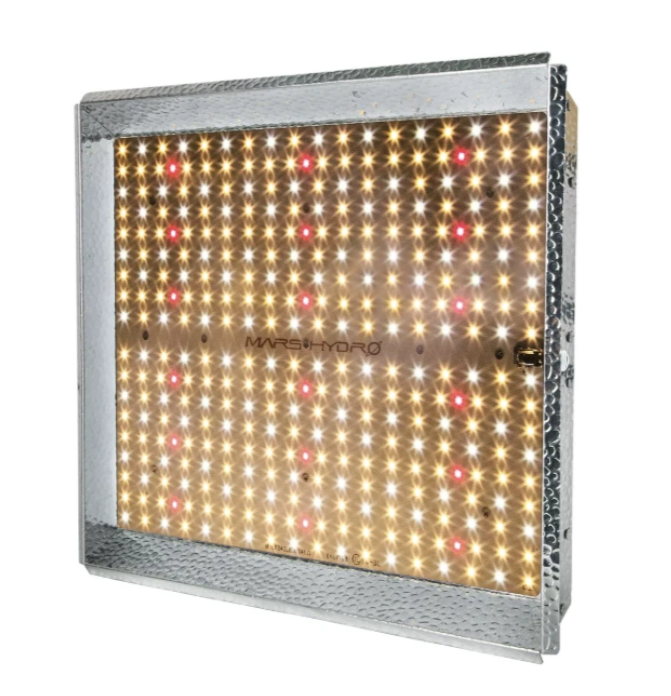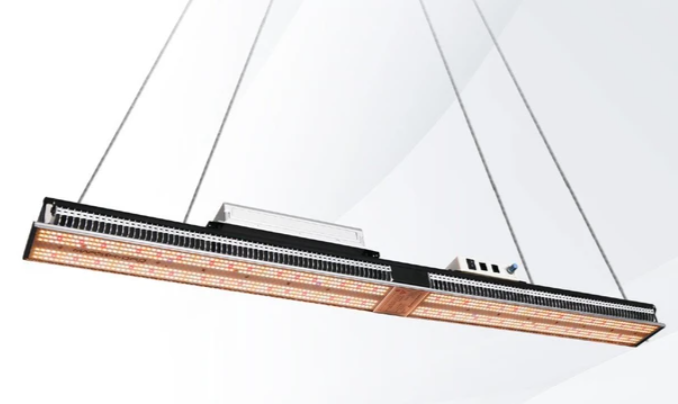HOW DO YOU KNOW IF YOUR PLANT IS GETTING TOO MUCH LIGHT?
Too much light can harm cannabis plants, and a thoughtful grower needs to be strategic about the placement and strength of light sources in a greenhouse environment. How do we konw if plants getting too much light?
There are some common phenomenon.
TIP BURN, NUTRIENT DEFICIENCIES & DYING LEAVES
As your plant gets higher levels of light, it increases how much nutrients are being taken in by the roots. This is most true for growers using powder or liquid nutrients.
This is because cannabis plants drink more water when it's sunny out. And taking in more water at the roots also causes the plant to take in more nutrients. In other words...
Cannabis plants take in more water and nutrients in bright light
Why? Photosynthesis (the process of making energy from light) causes the plant to lose extra water out of the leaves. As a plant evaporates water from the leaves, it creates negative pressure which sucks up water from the roots like a straw. This capillary action is how plants get water from the roots to the leaves. Though plants can also absorb nutrients through their leaves, cannabis plants generally get the majority of their nutrients during the process of taking water in through the roots.
So how much the plant drinks has a big effect on how much nutrients are being taken in.
So if a plant is drinking more, it's also taking in higher levels of nutrients from the roots, even if it doesn't need them...
NUTRIENT BURN
If a plant gets too much nutrients at once, it "doesn't know what to do with it all" and this causes problems in the plant. Generally the most common symptom is nutrient burn where the tips and edges of leaves get a brown, burnt appearance.
Though a plant can handle a small excess of nutrients, they won't be able to handle a huge extra load of minerals being piped in through the roots, especially if it happens all at once. An excess of a certain nutrient can show itself in many ways (like with Nitrogen Toxicity where leaves turn dark green), but when mineral levels get too high for the plant to process any more, you get this:
These nutrient burn symptoms are actually caused by the grow light being too close.
So you realize your plants are getting nutrient burn, and your thought may be to simply lower the nutrient levels. That should work, right?
TOP LEAVES (OR BUDS) GETTING BLEACHED
This is closely related to the problem of the plant showing nutrient deficiencies when lights are too bright. Leaf bleaching often looks a lot like a nutrient deficiency.
The fact is, leaves just start breaking down when they've been getting too much light for too long. They can show a few different symptoms that can look like different deficiencies, but noticing where the deficiencies/bleaching are happening will help alert you to the true solution.
So when you see the top leaves closest to the light are getting lighter than the rest of the plant, especially if they seem to be yellowing fast while the rest of the plant stays green, that's a big warning flag that the light is too close.
In cases where too-high intensity light levels are being used, leaves can't keep up with removing the waste products from photosynthesis. As the leaves gets more and more damaged, they begin to look bleached and stop being effective for anything.
This bleaching reaction seems to be most prominent when buds are fattening fast in addition to high light levels - the leaves just get tired out. They need to "retire" early after a hard life.
TOO MUCH LIGHT
Cannabis plants will show a number of key signs when they're getting too much light.
The most obvious indicator is leaf burning. This typically causes yellow leaves at the top of the plant directly under the grow lights. While the inside veins stay green, the leaves take on a yellow, burnt look. This effect may be mistaken for nitrogen deficiency, but nitrogen-deficient leaves typically fall off on their own, while light-burned yellow leaves won't fall off or be easily plucked.
Light burn may also cause loose and airy buds. That's because the excess light causes nutrient deficiencies as plants struggle to overcome their heat and thirst.
Fortunately, you don't have to wait for these symptoms to emerge to know whether greenhouse lighting is too strong. One simple test asks the grower to put a hand, palm down, at the top of the plant. In 10 to 15 seconds, you'll feel how much heat the plant is getting. If it is too hot for comfort on the back of your hand, that's probably more lighting than the plant requires.
There are some led grow light for cannabis with digital monitoring tools which can also help a grower keep an eye on lighting levels. Sensors that track heat and humidity can give a good sense of greenhouse conditions. By tracking the environment via a smartphone app, an informed grower will know if things are getting too hot and dry, a possible sign that the lights are cranked up too high.
BEST LED GROW LIGHTS OF 2020

MARS HYDRO TS 1000/2000/3000W LED QUANTUM BOARD
The spectrum of Mars Hydro TS 1000 LED grow light infinite close to natural light, best for all plants all stages growing, rapid response from seeds to harvest (germination, clones/cuttings, mothers, vegetative and flowering applications) , and increase yield & crop quality. Reflective aluminum hood helps to improve the light efficiency, scientifically engineered to keep the balance of PAR output and coverage area.
Innovative fanless design and no need to worry about heat dissipation. Liberates you and your plants from noise whether in sleep or activity time. Helps your plants become healthy and thrived in such a quiet environment and you can enjoy the bumper harvest!

MARS HYDRO SP 3000 LED GROW LIGHT
This Mars Hydro SP 3000 LED grow light use 960pcss Samsung LM301B and Osram 660nm led chips, which is higher quality and more efficiency.More warm white and red chips added, extremely good for plants at all stages from veg to bloom.High PPFD at 2.8 umol/j, average yield at 1.8g/w, increasing your yield 50% or more compared with old blurple and HPS lights.Dimmer knob added, more convenient to adjust the brightness. Up to 15 lights can be daisy-chained and control together on just one light.No fan design, no noise. A whole layer of the aluminum heatsink achieving optimal heat dissipation. Removable driver and 2m extension cord helps lower the growing room temperature.
GETTING IT RIGHT
Although too much light can impede plant growth, it's also a fairly easy problem to fix. There are a couple of common methods for remediating a too-bright greenhouse.
Distance matters when it comes to lighting. Plant burn often comes about when plants are growing too close to the main source of light and heat. Depending on your greenhouse configuration, it may be relatively easy to raise light fixtures or otherwise distance them from plants.
When there's no easy way to move lights away from the plants, a grower can bend taller plants to angle them away from the direct impact of over-lighting. The effect is the same as if the lights themselves were repositioned. It's all about adding distance.
Growers also can adjust the strength of lighting. Experts recommend 100 watts of light for a 2 foot by 2 foot grow area, up to 1,000 watts for an 8 foot by 8 foot area. Most growers will experiment as they seek the lighting levels that promote the best and fastest growth without compromising plant health.
Cannabis loves light and a well-illuminated greenhouse will produce strong, tall, healthy plants with robust buds. It's possible to overshoot the mark, though, and provide so much light that plants end up struggling rather than thriving.
By combining close firsthand observation with remote monitoring tools, growers can keep light burn in check and make rapid adjustments any time plants seem to be getting more light than is good for them. By being proactive and persistent, most growers can easily manage greenhouse lighting for high yields over time.
